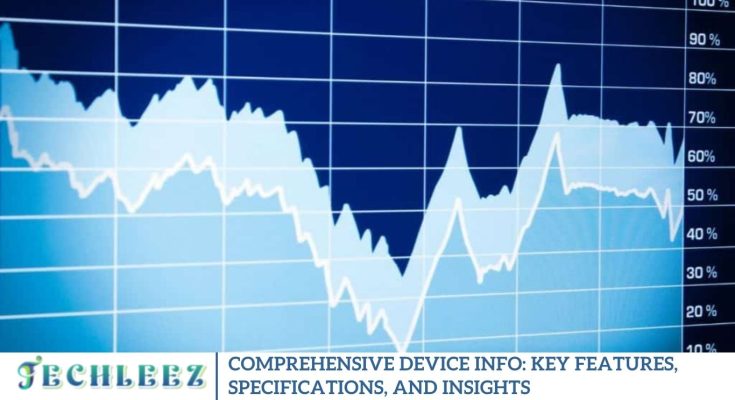Your smartphone or tablet’s internal specifications are more than just technical details. They’re essential. Whether you’re troubleshooting, assessing compatibility, or simply exploring your device’s capabilities, Device Info apps offer crucial insights into both the hardware and software that power your device. One such widely-used tool is Device Info, a comprehensive mobile app designed to provide a thorough overview of your device’s specifications.
Device Info is about how it functions, its standout features, the pros and cons, and some excellent alternatives. We’ll wrap up with a final verdict to help you decide if it’s the right tool for you.
What is the Device Info?
Device Info is a robust application available for both Android and iOS, designed to deliver in-depth information about your smartphone or tablet. It offers a wealth of data on your device’s system, hardware, software, sensors, battery health, storage usage, network status, and more. Whether you’re a developer or a casual user, this app serves as an essential diagnostic and monitoring tool, providing complete visibility into your device’s performance.
The app is highly user-friendly and organized into various tabs and sections for effortless navigation. Whether you need to check your phone’s RAM capacity or monitor the temperature of your CPU, Device Info makes it simple to access this information with just a few taps.
How Device Info Works
The Device Info app functions by accessing your Android or iOS device’s system APIs, gathering real-time data from the device’s hardware abstraction layer (HAL), operating system kernel, and built-in sensors. With the appropriate permissions, the app reads non-sensitive device logs and configuration files, ensuring accurate readings without compromising security.
There is no need to root your phone—most of the information provided is publicly available, and the app simply organizes it in a user-friendly format. Through its dashboard, users can effortlessly access a wide range of data, including system performance, thermal statistics, screen resolution, and even app usage statistics.
Features of Device Info
Device Overview
It offers a comprehensive snapshot of your device, including the model number, brand, manufacturer, IMEI number (if permitted), and OS version. It also provides details like the build number, security patch level, and baseband version.
CPU and GPU Details
Displays in-depth information about your device’s CPU, such as type, core count, clock speed, real-time usage, and architecture. For the GPU, it provides details on the model, vendor, OpenGL version, and graphical performance statistics.
Battery Health
Tracks your battery’s current percentage, health, voltage, capacity, charging status, temperature, and battery technology (e.g., Li-ion or Li-Po).
Storage and RAM
It shows usage statistics for internal and external storage, available space, and total memory. It also provides real-time RAM consumption data, highlighting active processes.
Display Info
Includes key display information such as screen size, resolution, pixel density (DPI), refresh rate, screen technology (AMOLED, IPS), and brightness levels.
Sensors Monitoring
Lists all the sensors available on your device (e.g., accelerometer, gyroscope, magnetometer, light sensor, proximity sensor) and provides live data streams from these sensors.
Network & SIM Info
Displays detailed network information, including IP address, MAC address, network type (4G/5G), carrier name, signal strength, and roaming status.
App Manager
Allows you to manage installed applications by showing details such as app size, permissions, version codes, and update history.
Thermal Monitoring
It monitors and displays the current temperatures of key components, such as the CPU, battery, and motherboard, helping you monitor device heat levels.
System Logs
Provides logs of system events, boot time, uptime, and crash reports (if enabled), allowing users to track device performance over time.
When Is It Time to Upgrade?
Knowing your PC specs is just the beginning. Here are some key signs that it might be time to consider an upgrade:
Slow Performance: Programs take longer to load, and your system feels sluggish or unresponsive.
Frequent Crashes or Freezes: Regular crashes or freezes could indicate outdated hardware or insufficient system resources.
Inability to Run New Software: If your system fails to meet the minimum requirements for new applications or games, it’s a clear sign it’s time to upgrade.
Outdated Operating System: If your hardware can’t support the latest OS updates or your version of Windows is no longer compatible with essential applications, it’s time to consider a new system.
Insufficient Storage: If you’re constantly running out of space or dealing with a cluttered hard drive, an upgrade could provide more room for your files and apps.
Specifications: The Technical Breakdown
Now that we’ve covered the key features of devices let’s dive into the technical specifications. These are the detailed metrics that give you a deeper understanding of your device’s hardware and software. Specifications include details such as:
Operating System (OS)
The operating system is your device’s software foundation. Whether it’s iOS, Android, Windows, or macOS, each operating system has unique features and optimizations that affect your device’s usability and compatibility. The OS determines what apps you can download, how you interact with your device, and its overall performance.
Network Connectivity
Network connectivity is another critical aspect of device performance. Modern devices support various types of wireless connections, including Wi-Fi (2.4GHz and 5GHz), Bluetooth, NFC, and cellular networks like 4G LTE and 5G. For users who rely on fast internet speeds, ensuring that your device supports the latest Wi-Fi standards and cellular connectivity options is crucial.
Ports and Connectivity Options
The types of ports your device supports, such as USB-C, HDMI, or headphone jacks, play a significant role in how you connect to external devices. USB-C is becoming the standard for fast charging and data transfer, while HDMI ports allow users to connect their devices to larger screens.
Graphics Processor (GPU)
The GPU (Graphics Processing Unit) is essential for devices designed for gaming, media creation, or 3D applications. The GPU handles rendering and visual processing, which directly affects the quality of gaming, video editing, and other graphics-intensive tasks. Devices with dedicated GPUs (e.g., NVIDIA GeForce, AMD Radeon) tend to perform better than those with integrated graphics.
How to Make the Most of Your Device
Once you understand the key features and specifications of your device, it’s time to optimize your experience. Here are some tips for getting the best performance:
Regular Software Updates
Keep your device up-to-date with the latest software updates. These updates often include bug fixes, security patches, and new features that can improve performance and stability. If possible, enable automatic updates to ensure your device always runs the latest version.
Battery Optimization
To extend battery life, use power-saving modes, reduce screen brightness, and turn off unused features like Bluetooth or GPS when not in use. Regularly checking battery health and using the device within its recommended charging range (between 20% and 80%) can also help prolong battery life.
Storage Management
Monitor your device’s storage to ensure you have enough space for essential apps and files. If your device supports expandable storage, consider using a microSD card for additional space. Delete unnecessary files or use cloud storage to free up local storage.
Security and Privacy Features
Many modern devices come with built-in security features such as fingerprint sensors, facial recognition, and encrypted communication. To protect your personal data, enable these features. Additionally, install trusted apps and be cautious when granting app permissions to protect your privacy.
Frequently Asked Questions
What is “Comprehensive Device Info”?
Comprehensive device info refers to a detailed overview of the device’s key features, specifications, and performance aspects. This includes information on hardware components like the processor, RAM, storage, camera, display, battery, and network connectivity, as well as insights into its operating system and software features.
Why are device specifications necessary?
Device specifications provide crucial details about a device’s capabilities, helping users understand its performance, durability, and suitability for their needs. These details influence tasks such as gaming, multitasking, media consumption, and productivity, allowing users to make more informed purchasing decisions.
What does the processor (CPU) do for my device?
The processor, or CPU, is responsible for executing instructions and processing data. It controls your device’s performance, including the speed of tasks such as app launching, gaming, and media playback. A faster, more powerful CPU allows for smoother performance and quicker responses.
How does RAM affect my device’s performance?
RAM (Random Access Memory) helps your device manage multiple tasks at once. More RAM allows the device to handle more applications simultaneously without slowing down. For basic tasks, 4GB of RAM is usually sufficient, but for heavy multitasking or gaming, 8GB or more is recommended.
What is the difference between internal storage and expandable storage?
Internal storage refers to your device’s built-in memory, where apps, files, and media are stored. Expandable storage, often provided via microSD cards, offers additional space for users who need more storage without having to upgrade to a higher storage variant of the device.
Conclusion
Comprehensive device information, including key features, specifications, and insights, is essential for making informed decisions. Whether you’re selecting a new device or looking to optimize the one you already own, being well-versed in areas like display quality, processor power, storage capacity, camera performance, and battery life can significantly enhance your overall user experience.
Knowing your device’s technical specifications and features allows you to maximize its potential and ensure it meets your specific needs, whether for gaming, productivity, or media consumption. Moreover, insights into software updates, storage management, and security features can help you maintain a smooth and efficient experience over time.




